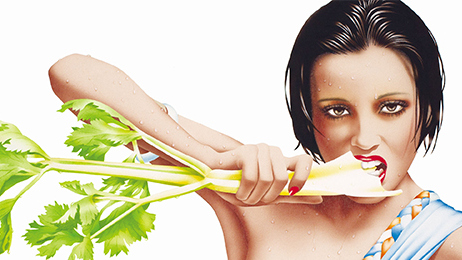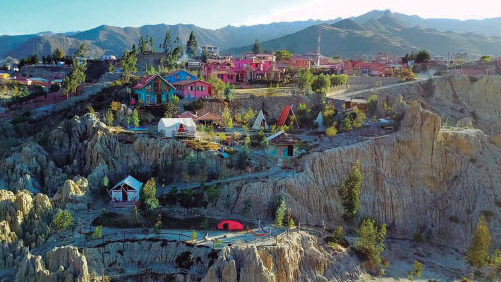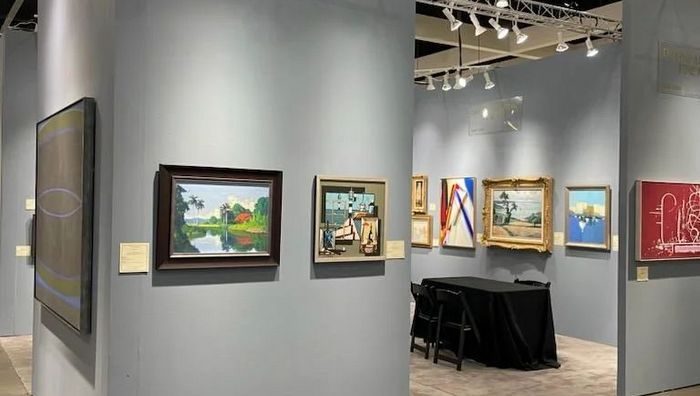Michael Dweck is a sensualist, a documentarian, a good story teller, and a great admirer of feminine beauty. He is also something of an islander in spirit, raised as he was on Long Island, New York. Indeed, he has a profound sense of place and community. In his photographic vision these qualities have served him well. His first major photographic work was published in volume form as The End: Montauk, N.Y., and portrays the old fishing community of Montauk and its surfing subculture, at the very end of Long Island, as far away from New York City as is geographically possible. It is an evocation of a real-world paradise lost: the paradise of summer, youth, and erotic possibility, and of community and camaraderie in a special place apart an American version of the Arcadian vision. Blending nostalgia, fantasy, and documentation the photographs present a compelling portrait of a place in time and a way of life at once fading and being reinvented with each new season.
Michael Dweck is a sensualist, a documentarian, a good story teller, and a great admirer of feminine beauty. He is also something of an islander in spirit, raised as he was on Long Island, New York. Indeed, he has a profound sense of place and community. In his photographic vision these qualities have served him well. His first major photographic work was published in volume form as The End: Montauk, N.Y., and portrays the old fishing community of Montauk and its surfing subculture, at the very end of Long Island, as far away from New York City as is geographically possible. It is an evocation of a real-world paradise lost: the paradise of summer, youth, and erotic possibility, and of community and camaraderie in a special place apart an American version of the Arcadian vision. Blending nostalgia, fantasy, and documentation the photographs present a compelling portrait of a place in time and a way of life at once fading and being reinvented with each new season.
The signature image of the The End is Sonya, Poles, an image of ecstatic summer. In the photograph, a beautiful young woman in full naked glory her blond hair blown back, her breasts aloft, a smile of anticipation bounds across a glistening beach with a surfboard under her arm, toward the incoming waves. In the far distance, in the upper margin of the picture, waves and dunes, surf and scrub fringe the horizon line which divides her head from her body. Her face is profiled against the great sky, and her dynamic body against the flat expanse of wet sand. All the bliss of summer fun and youthful promise is summed up by her scissor kick, reiterated by her shadow and her reflection, a vivacious v form that becomes a faceted diamond cleaved from light, and that bolt of white, like a missile, will carve out the place on the wave that will bear her back over the beating tide like a goddess from the sea.
Michael Dwecks The End: Montauk, N.Y., is a private Idaho, a personal Eden, at once remembered and imagined. The Arcadian setting is a place for recreation, self-invention, and the celebration of physical beauty and well-being and the tender temptations of the flesh. It is a down-home beach paradise of a distinctly American variety, Endless Summer that blessed but all too brief interlude that separates the seasons of school and work, childhood and adulthood. And yet it mingles the yearnings and anxieties of youth and age, of innocence and conscience, the exuberance of ones salad days and the frisson of old bachelors. For the season in the sun must inevitably pass into autumn. Youth and beauty blush, exude their sweetness, and exert their power, but then falter and fade before the onslaught of the years, under the overarching, ozone-depleted sky. Sadly, our times are not in our hands, and it is as if the eviction notice were tied to the gate, even as one enters the happy precinct. The unease of that knowledge hovers over the good fun. The golden youth of one summer is the worldly-wise veteran or the broken old timer of another. The End celebrates youth and beauty at the same time that it is an elegy to lost youth and an ode to the consolations of art.
Growing up not far from the ocean, Dweck often went night fishing along the islands south shore and off Montauk. When out fishing on moonlit nights, Dweck was always intrigued by the mysterious forms of fish passing swiftly by just under the surface like fleeting shadows, and he fantasized about falling overboard into the black waters and encountering those evanescent shapes and finding them to be beautiful women. The ancient allure of the mermaid. And so, upon completing his project on Montauk, Dweck began exploring the theme of the female nude in water. He began by photographing comely young women in pools and lake shallows from above, mostly at night. But with the change of seasons, he flew south to Miami, Florida, and continued to photograph in swimming pools and near the ocean. However, he was not satisfied with photographing from above and he began to look for a setting which would allow him to photograph underwater. In his search he came upon the Weeki Wachee Spring in Florida near the Gulf coast, famed for its mermaid shows, where the water is clear, pure, of a light blue-green cast, and where he could photograph from an aquarium-like theater built into the bank of the eponymous river, or from a clear tank partially submerged in the river, and while swimming with his subjects.
Dwecks photographic vision of the mermaid does not dwell on turgid fin de sièle fantasies or the kitsch of Hollywood. He is enthralled by the female form and by the movement of water by the play of light and shadow, distortion and reflection. In his vision of the mermaid he invokes an aspect of life that is lived naturally as if uncorrupted, indeed pure. Whatever the circumstances of the lives of his subjects, they appear to be embers of a special world. Certainly they do not escape the claims of the real world, and yet immersed in the waters one feels that for a time they do, if only briefly, if only as long as a very deep breath.
Photographed underwater, whether from behind glass or otherwise, the figures float in the field of vision as if front and back, top and bottom, and sides all change places at will at all times. Only the light projected or filtering from above orients the viewer to the relative position of the body suspended in the water. Elegant postures and gestures and erotic positions are assumed unself-consciously and as easily relaxed. The veils and broidery of water, still and in motion, of shadow and light, conceal and distort as much as reveal. The fetching form of a pretty young girl may transmogrify into a raw mass of muscle, like a Francis Bacon painting, or strike a pose as exquisite as a classical ballet dancer on point. Torsos and limbs and features may dissolve in a painterly swirl, as in the late paintings of Willem de Kooning. We rarely catch a glimpse of their faces, only occasionally a nose or a nipple or a navel.
In legend and lore, the mermaid is a symbol of fatal seduction. She represents the self-destructive aspect of desire, the toxic allure of the unattainable. And yet water is the source of life, the essential means of purification, and the elemental locus of regeneration. Dwecks mermaids are sensual and alluring, but also free and unfettered, blossoming. But there is also something troubling in the photographer’s somatic divagations, in the optical distortions of the lithesome bodies that he seizes upon through the roiling waters. It is the ruthlessness of the hungry eye of the photographer, who, like mermaids of yore, is a predator himself. And the photographer as predator must keep searching, remain in constant motion, continue photographing. With multiple projects in play, it will be very interesting to see what Michael Dwecks vision offers up next to our own insatiable eyes.




Related Publications

How Harumi Yamaguchi invented the modern woman in Japan
March 16, 2022
Giovanni Duarte and an orchestra capable of everything
August 26, 2020











